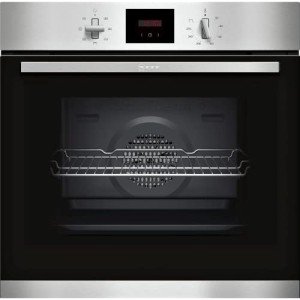Choosing the Right Oven for Your Kitchen: A Comprehensive Guide
Ovens have actually been a foundation of culinary ventures for centuries, supplying a vital home appliance for both amateur cooks and expert chefs alike. As contemporary kitchens develop, so too do the types of ovens offered, each developed to meet the diverse needs of cooking lovers. The following guide supplies a comprehensive overview of various oven types, their functions, and considerations to keep in mind when picking the right oven for your kitchen.
Kinds of Ovens
When considering an oven for your kitchen, it is very important to comprehend the different types offered. Each kind of oven has distinct characteristics that can affect cooking techniques and overall kitchen functionality.
1. Conventional Ovens
Conventional ovens are the many standard type, typically found in homes around the globe. Best Built In Single Ovens utilize either gas or electric power and use an uncomplicated cooking technique.
- Gas Ovens: Utilize gas or gas, providing instant heat and outstanding temperature control.
- Electric Ovens: Use electric coils or a heating component, typically providing more even heat distribution.
2. Convection Ovens
Convection ovens are developed with a built-in fan that flows hot air around the food, leading to much faster cooking times and more even results.
- Advantages:
- Reduced cooking times (as much as 25% faster)
- Even baking and browning
- Disadvantages:
- May need modifications to dishes (lower temperature level or shorter time)
3. Wall Ovens
Wall ovens are a popular option in contemporary kitchens, as they can be set up at eye level, saving counter area and increasing availability.
- Single Wall Ovens: Ideal for smaller sized kitchens, appropriate for daily cooking.
- Double Wall Ovens: Increase capacity for large meals and several meals.
4. Range Ovens
Range ovens combine both a cooking range (with burners) and an oven, offering a compact service for kitchen areas with minimal area.
- Freestanding Ranges: Standalone systems that can fit into any kitchen design.
- Slide-in Ranges: Designed to fit comfortably between cabinets for a more integrated appearance.
5. Steam Ovens
Steam ovens use steam rather of dry heat, preserving wetness and nutrients in food.
- Benefits:
- Healthier cooking choice
- Suitable for baking bread and cooking vegetables
- Factors to consider:
- May require additional actions for particular dishes
Key Features to Consider
When picking an oven, think about the following features that can enhance cooking experiences:
| Feature | Description |
|---|---|
| Size | Ensure it fits your kitchen space and fulfills your cooking requires. |
| Self-Cleaning | Makes maintenance easier, removing the requirement for manual scrubbing. |
| Smart Technology | Ovens with Wi-Fi connection can simplify cooking through apps. |
| Temperature level Range | A broader range can improve cooking flexibility. |
| Security Features | Functions such as automobile shut-off can boost kitchen safety. |
Tips for Choosing the Right Oven
Picking the best oven can often be a daunting job. Here are a number of suggestions to streamline the process:
- Identify Your Cooking Habits: Consider how often you prepare and the kinds of meals you prepare. For example, avid bakers might choose a stove for even baking, while those who cook roasts may lean towards a standard oven.
- Step Your Space: Before making a purchase, determine the location where the oven will be put to guarantee it fits comfortably with your kitchen style.
- Consider Your Budget: Ovens range commonly in price. It is essential to set a budget and think about the long-term worth of the home appliance.
- Read Reviews: Online reviews can supply insight into a design's efficiency and reliability in time.
- Inspect Energy Ratings: Energy-efficient models can save you cash on utility expenses in the long run.
Upkeep and Care
To take full advantage of the life expectancy of your oven, proper maintenance is key. Follow these simple actions:
- Regular Cleaning: Make cleaning up a practice after each usage, and use self-cleaning features when readily available.
- Inspect Seals: Ensure that the door seals tightly; this avoids heat loss throughout cooking.
- Calibration: Periodically inspect the oven temperature for accuracy. An oven thermometer can assist with this.
- Professional Servicing: Schedule routine upkeep talk to a professional to guarantee the device operates efficiently.
FAQs
What is the best kind of oven for a small kitchen?
For small kitchen areas, wall ovens or compact range ovens are exceptional alternatives as they take up less space and can be set up to fit into readily available cabinetry.
How do I maintain a gas oven?
Regularly examine the burners for clogs and make sure that the oven's interior is cleaned up to prevent accumulation from spills and splatters.
Can I bake and broil in the same oven?
Yes, most modern ovens enable both functions. Check the user manual for particular guidelines on running your oven.
What should I do if my oven isn't warming correctly?
Initially, inspect if it's correctly plugged in or if the gas is streaming. If concerns continue, speak with a professional to identify potential problems.
Is it worth purchasing a wise oven?
If cooking convenience and the current innovation attract you, investing in a smart oven can be rewarding, as they provide a variety of enhanced cooking functions.
Selecting the right oven for your kitchen is essential to both the performance and enjoyment of your cooking experience. By thinking about the numerous types of ovens, necessary features, and maintenance ideas, consumers can make an informed choice that satisfies their cooking requirements and choices. Whether you are a casual cook or a lover, the best oven can substantially raise your cooking experiences.

